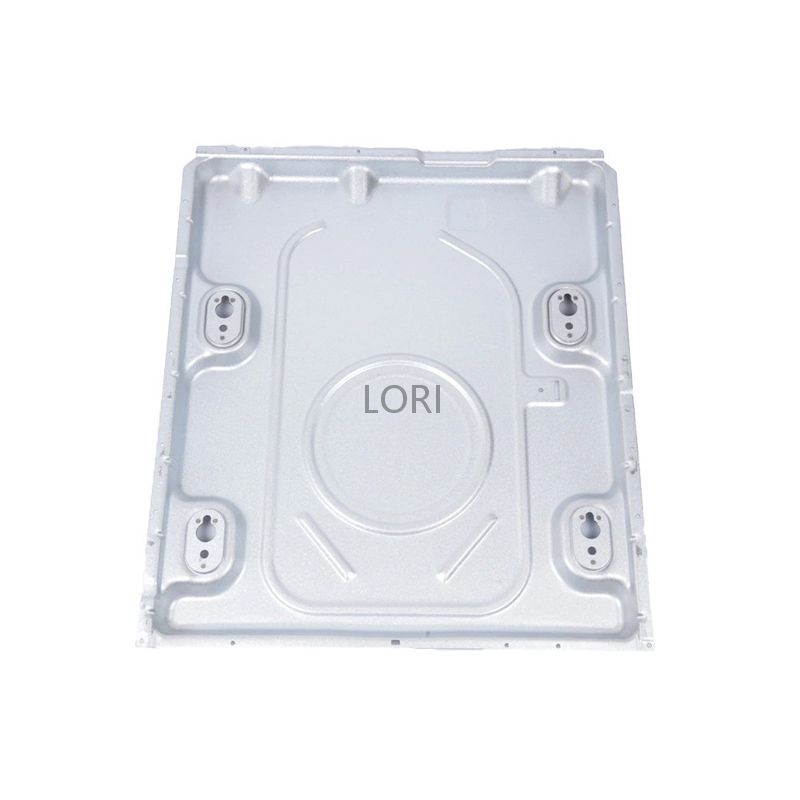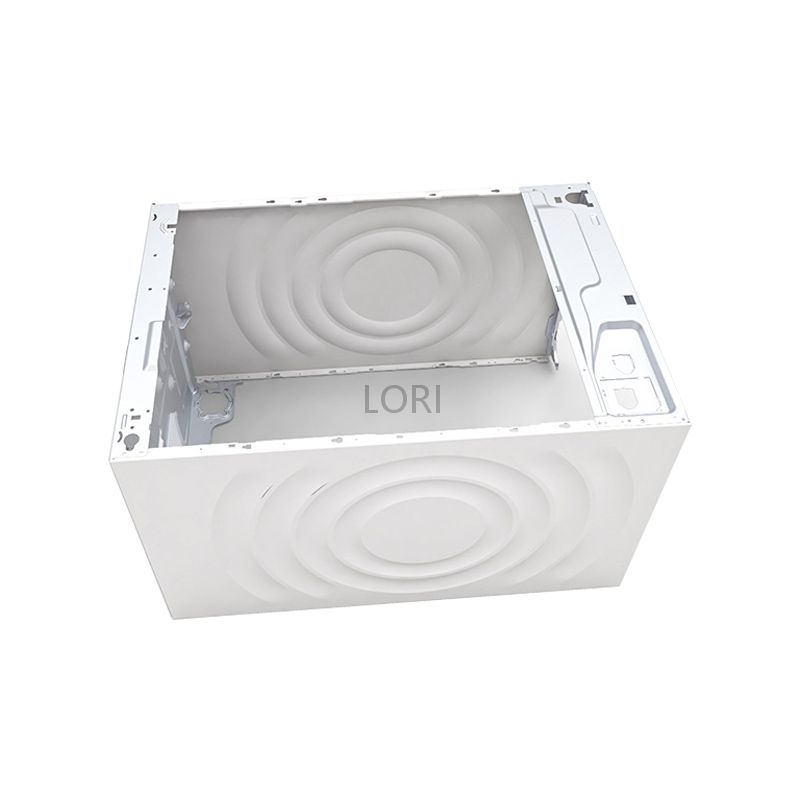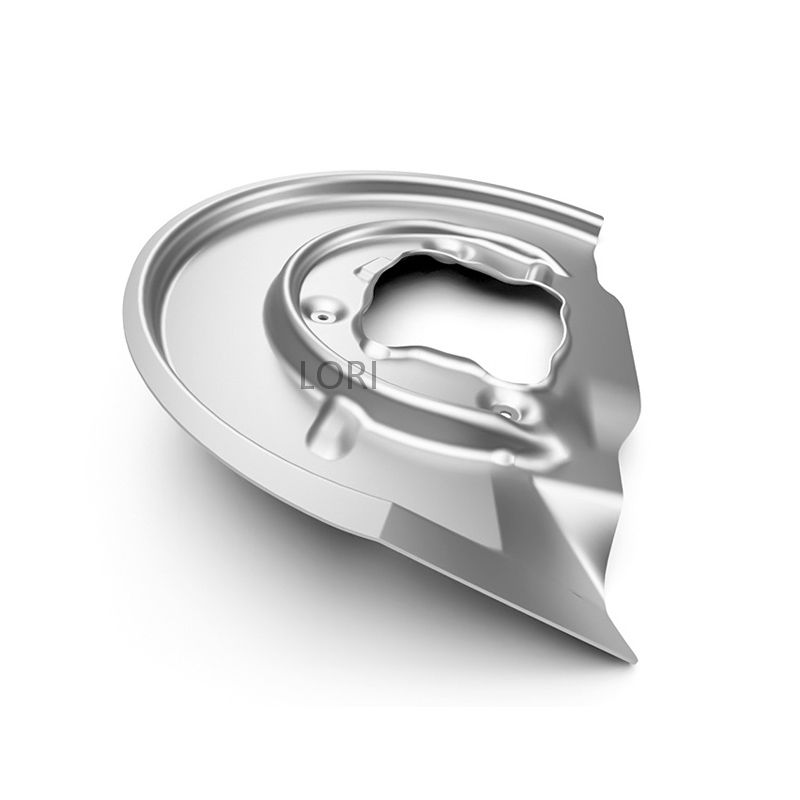BETTER TOUCH BETTER BUSINESS
Contact Sales at Lori.
Sheet Metal Processing is a technology that applies force to thin metal sheets to deform them and create three-dimensional shapes. The methods for sheet metal processing can be broadly divided into manual sheet metal work and mechanical sheet metal work. Manual sheet metal work involves shaping metal sheets using tools such as hammers, whereas mechanical sheet metal work involves clamping materials between molds and applying hydraulic or other mechanical forces to shape them. In this introduction, we will cover the basic knowledge of sheet metal processing that designers should be aware of. In the context of industrial products, mechanical sheet metal processing is referred to as "sheet metal processing," and the parts made from this process are called "sheet metal parts."
Key Points of Sheet Metal Processing
In sheet metal processing, various methods are used to apply force to flat metal sheets to achieve the desired shape. This principle is related to the properties of metal materials. When a load is applied to a metal material, it changes the distance between the atoms and deforms as strain occurs. At this point, an internal force attempts to return the metal to its original state, resulting in elastic deformation if the load is small and removed. When the load exceeds a certain point (yield point) due to continuous application, the metal undergoes plastic deformation and cannot return to its original state. If the load continues, the metal will eventually break. In sheet metal processing, it is important to adjust and process while shaping to achieve the target shape through plastic deformation.

Steps in Sheet Metal Processing
The sheet metal processing process typically consists of eight steps before the product is finished. Let's look at each step in detail:
1.Unfolding / Programming
Design drawings are often created using 3D CAD, but sheet metal processing starts from a flat sheet, so the CAD drawing must be "unfolded" into a flat layout. Once the drawing is unfolded, "layout" involves arranging the parts to efficiently obtain parts from a standard-sized material while minimizing waste, and programming for the processing is prepared.
2.Blanking / Cutting
This step, also known as blanking, involves cutting the external edges or internal holes of the metal sheet. The main equipment used for this process includes laser cutters and turret presses. Broadly, laser cutters are suitable for high-speed cutting of external edges and large holes, while turret presses are good for handling many holes and forming processes. There are also "laser-turret punch press combo machines" that combine the advantages of both. Since each sheet metal factory has different equipment, it is best to categorize the processing based on the factory’s equipment when placing an order.
3.Deburring
Regardless of the processing method used in the previous step, there will be some degree of burrs from laser cutting (slag), punching (burrs), and edges. Deburring involves removing these imperfections. It can be done manually with a hand angle grinder or file, or with a deburring machine using rotating coarse sandpaper. In deburring for sheet metal processing, it is challenging to manage fine dimensions like C0.2 or R0.2 as in cutting processes. A specification like "no burrs" is ambiguous, but specifying "burrs should be removed to a level that does not cut hands" is effective. It is best to agree on the acceptable range of burrs with the factory when placing an order.
4.Bending
In general bending processes for mechanical sheet metal, the mold is installed on a machine called a press brake, which applies pressure to bend the cut sheet metal at a certain angle. The press brake consists of an upper die (punch) and a lower die (die), and the upper part moves up and down to bend the metal sheet. The bending angle can vary due to material batches and rolling directions, so adjustments are needed for each bend. However, it is one of the most crucial processes in sheet metal processing because the precision of this step greatly affects the ease of subsequent welding and the appearance of the product. The "press brake" is also referred to as a "bending machine" or "bender."
5.Welding
Welding is a process that joins metals by heating them until they melt and then allowing them to cool. In sheet metal processing, TIG welding and laser welding are commonly used. TIG welding, which uses a tungsten electrode, is sometimes called "argon arc welding" because argon is used as a protective gas. TIG welding can also perform build-up welding by adding filler rods to the molten area, but it can cause deformation due to high heat input, and results heavily depend on the welder’s skill. Laser welding is a method that minimizes thermal strain and standardizes the process but is not suitable for parts requiring build-up welding and may require a change in processing methods.
6. Finishing (Including Surface Treatment)
Finishing processes in sheet metal work include removing welding heat strain, grinding down build-up welds, electrolytic polishing to remove burn marks from welding, and surface finishing processes such as grinding and polishing.
7.Assembly
This step involves combining multiple parts using bolts, nuts, and rivets, and is used in parts where welding strength is not required or where later disassembly might be needed. Assembly covers a range of tasks from small component assembly to medium-sized units and the final assembly of machines or equipment. In the sheet metal industry, some companies refer to welding assembly processes as "assembly" (welding assembly).
8.Inspection
Before leaving the factory, sheet metal products are inspected for dimensions and appearance. For dimensional checks, tools such as calipers, rulers, and protractors are used to compare the product with the design drawings. For appearance checks, the product is visually inspected for scratches and burrs. Some factories use image measuring machines or coordinate measuring machines for inspection.

Types of Processing Equipment Used in Sheet Metal Processing
As mentioned earlier, various equipment is used in each step of sheet metal processing. Here, we will introduce the main types of equipment used in sheet metal processing.
1.Laser Cutting Machine
A laser cutting machine uses high-power lasers to irradiate metal materials, melting them locally and blowing away the molten metal with gas to perform cutting. It excels at high-speed processing for long perimeters, such as external edges and slot-shaped holes. On the other hand, if there are many holes on the sheet, the number of perforations will increase, thus requiring more time for processing. However, in recent years, high-power laser equipment has made high-speed processing, including perforation, possible. However, it cannot be used for creating threaded holes or deburring.
2.Turret Punch Press
A turret punch press is a machine that mounts numerous small dies on a tool holder called a turret to perform high-speed punching and shearing of metal. It is suitable for high-speed processing of multi-hole parts because it punches one hole at a time. It can also perform tapping, deburring, countersinking, and louvering as forming processes. However, creating external perimeters and slot-shaped holes requires many punching operations, which makes the process time-consuming.
3.Laser-Turret Punch Press Combo Machine
A laser-turret punch press combo machine is a combined machine equipped with both laser cutting and turret punching functions. It integrates punching and forming processes in a single operation. For example, it uses laser cutting for time-consuming external edges and large holes, and turret punching for perforation and forming processes. Since there is no need to change equipment for each process, there is less chance of misalignment of the workpiece due to machine changes.
4.Deburring Machine
In the past, sheet metal factories typically used manual angle grinders or files for deburring. However, in recent years, more factories have introduced deburring machines. These machines use a conveyor belt to hold the workpiece and a rotating brush with sandpaper to evenly remove burrs.
5.Press Brake
In a press brake, the upper die (punch) is installed on the upper part of the machine, and the lower die (die) is installed on the lower part. The machine moves the upper part up and down to apply pressure and bend the metal sheet. Based on the method of applying pressure, there are mechanical, hydraulic, and servo motor + ball screw types, with NC models for adjusting pressure becoming common. In recent years, models with automatic back gauges (stops) have become widespread in factories requiring high bending precision. The material properties, thickness, and length of the parts that can be processed are determined by the maximum pressure (tonnage) and the available processing length.
6.Laser Welding Machine
Laser welding is a welding method characterized by deep penetration and a small heat-affected zone, making it less prone to thermal distortion. Initially, YAG laser welding was popular for its ability to suppress deformation and maintain aesthetics. Around 2015, fiber laser welding machines emerged, solving the problem of insufficient intensity of YAG lasers and achieving low distortion and high-strength welding. The greatest advantage of laser welding is that it minimizes deformation even in thin sheets, making it a method that can be used for processing ultra-thin sheets and tasks that only skilled craftsmen could perform with TIG welding. As equipment becomes lighter in the future and the use of thin sheets increases, laser welding is expected to become a more common method.
7.TIG Welding Machine
TIG welding is an electric arc welding method and is currently the most commonly used welding method in mechanical sheet metal processing. Inert gases, mostly argon, are used, and it is sometimes called "argon arc welding." TIG welding uses a high-voltage electric arc to melt the metal and join it, providing excellent gas-tightness and water-tightness, and high welding strength. On the other hand, the high heat input to the metal creates a large heat-affected zone around the weld pool, resulting in significant product distortion. Techniques for minimizing this distortion and compensating for it are very difficult, making TIG welding known as a "craftsman's skill."

Materials and Surface Treatments Used in Sheet Metal Processing
The materials used in sheet metal processing include stainless steel, carbon steel (SPCC, SECC), aluminum alloys, and others. The thickness of the sheets can vary depending on the material, ranging from 0.1 to 22 mm. Consider the product's application and processing characteristics when selecting materials.
Advantages and Disadvantages of Sheet Metal Processing
The greatest advantage of **sheet metal processing** is its suitability for small-batch, diverse production runs. Stamping is a representative plastic processing method ideal for high-volume production of parts with the same shape, but it requires manufacturing molds for each product, making it expensive for low-volume production.
In contrast, sheet metal processing uses general-purpose equipment for all steps, including "blanking," "bending," and "welding," and also uses standard molds for bending. Therefore, it can handle small-batch, diverse manufacturing with flexibility in design changes. Additionally, it is advantageous because complex shapes can be made from a single sheet through a combination of "blanking," "bending," and "welding."
However, the downside is that parts are processed one at a time, so producing large quantities of identical parts takes a lot of time. Especially for processes like welding, which rely significantly on skilled craftsmanship, it is not suitable for mass production.

Methods to Reduce Costs in Sheet Metal Processing
Here are four methods to reduce costs in sheet metal processing:
Order According to the Manufacturer's Specialization
Although all manufacturers may be called "sheet metal processing manufacturers," each company has different types of equipment. It is possible to reduce costs by ordering based on the characteristics of the processing equipment. For example, as mentioned earlier, a laser cutting machine is good for high-speed processing of long perimeters and slot-shaped holes, while a turret punch press excels at high-speed processing of multiple holes and forming processes. If you order products focusing on hole processing and forming from a manufacturer that mainly uses laser cutting, the processing costs may increase, and similarly, ordering large perimeter cutting from a manufacturer that mainly uses turret punch presses may also be costly. Understanding the manufacturer's areas of expertise and ordering accordingly can significantly reduce costs.
Reduce Welding by Using Bending Where Possible
As discussed in the "TIG Welding" section, welding for small batches and diverse products often requires skilled craftsmanship, resulting in high processing costs. For example, if two plates are aligned at 90 degrees, bending the plates instead of welding them is often cheaper. It is recommended to choose bending based on its characteristics (material, interference with dies, etc.). Besides bending, riveting is also a cost-effective alternative but must be specified as a no-welding solution in the drawings.
Re-evaluate Deburring Requirements
Clearly specifying "burr-free all around" in the drawings can lead to significant equipment and labor costs for deburring. By narrowing down the deburring requirements to only what is truly necessary, the factory might reduce deburring labor costs. Additionally, rather than demanding high precision indiscriminately, discussing the actual achievable precision and tolerance for deburring with the manufacturer can reveal ways to lower costs.
Re-evaluate the Necessity of Build-Up Welding
In processes like square joint welding, build-up welding is often required to ensure strength, but laser welding is effective for low-distortion welding of thin sheets and is not suited for build-up welding. In recent years, methods such as fiber laser welding have become popular for ensuring sufficient strength without requiring build-up welding. Considering alternative processing methods instead of insisting on build-up welding can reduce costs.
Sheet metal processing is a flexible technique suitable for small-batch, diverse production needs. However, it remains a challenging field due to the significant reliance on craftsmanship. Additionally, manufacturing costs vary based on the choice of equipment and methods, so understanding the characteristics of sheet metal processing is essential for effective design and cost management.
Copyright © 2025 Shenzhen Lori Technology Co.Ltd. | All Rights Reserved.